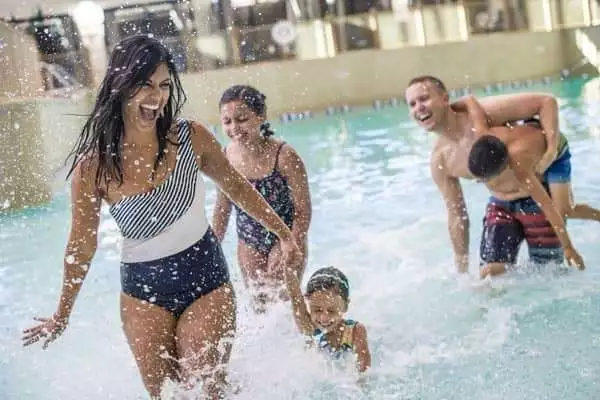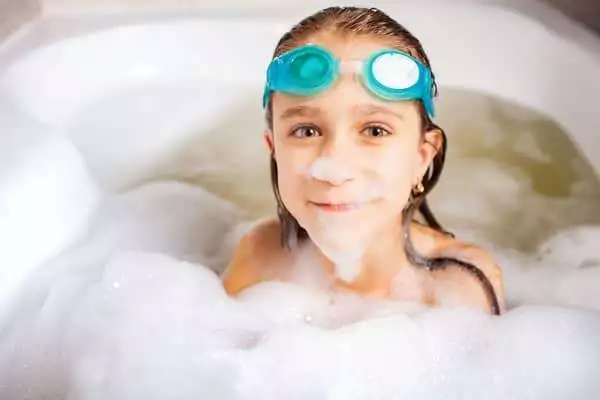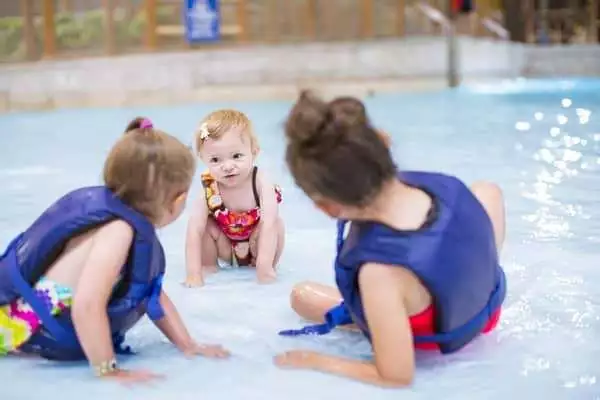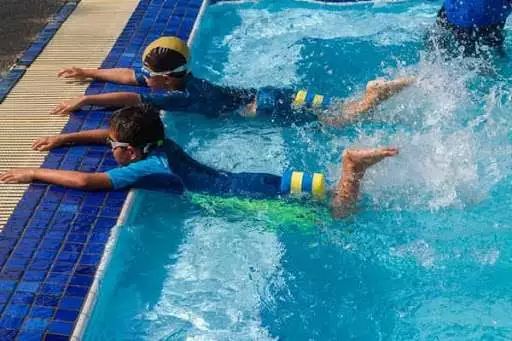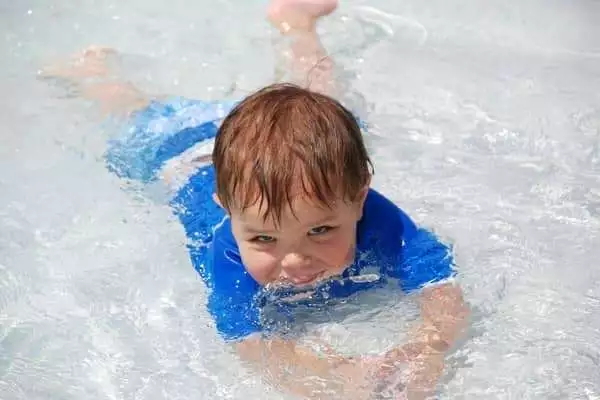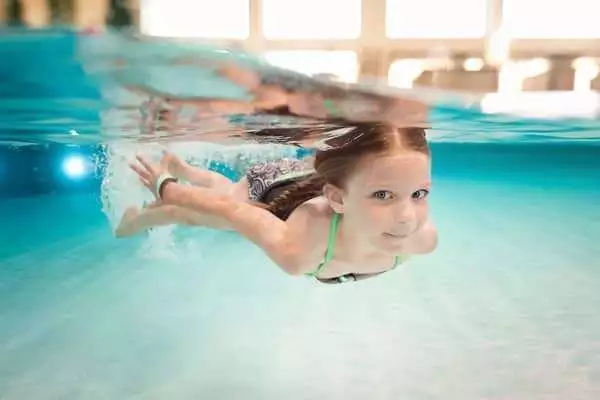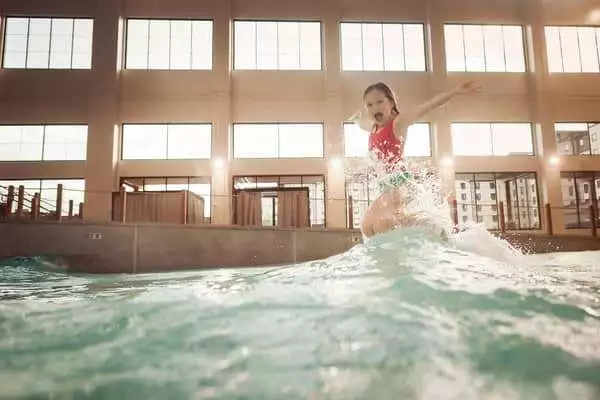Enjoy our expert guide on how to teach kids to swim.
Want to teach kids to swim? Let Great Wolf Lodge walk you through the basics! To enjoy your time in the pool, it’s important the little ones learn how to navigate their way around the water. Check out the guide below to get started!
View Table of Contents
Teach Kids to Swim in 6 Simple Steps
Swimming lessons are a great way to teach a child to swim, but the outcomes don’t occur overnight. So complement the process by spending some extra time in the pool. Show your little one important exercises that can help strengthen their swimming skills.
If you stick to an organized schedule, you should start seeing progress in no time! You can even swap out the swim lessons for a more DIY approach (time and access permitting).
Check out our tips below before you begin.
1. Introduce Your Child to the Water
It’s not uncommon to encounter a kid who is afraid of water. Avoid temper tantrums in the pool by introducing them to some simple water activities at home.
Start experimenting with different things you can do in the shower or bathtub. For example, fill up a small cup of warm water and pour it over their shoulders and head.
2. Make Them Feel Safe in the Water
A fear of water can be exasperated by negative experiences, like getting water in your eyes, lodged in your ears, or up your nose. Fortunately, there are plenty of accessories around to help prevent that from happening.
A pair of goggles, earplugs, or band-its can protect the kids from unpleasant experiences in the pool. Make them feel even more secure with a flotation device or life jacket when in the water.
3. Kick Those Legs
The next step in the learning process revolves around getting in the water. Have the kids hang on to a float or the side of the pool and kick out their legs as straight as possible.
4. Practice Breathing
Learning to hold your breath underwater is an essential life skill. The earlier you teach your child to do it, the more relaxed you’ll feel bringing your family around water. You can begin this process by encouraging the kids to blow bubbles in the water.
Have them hold their breath and place their mouth in the water. Once they get comfortable with that, you can ask them to start submerging their mouth and nose together.
5. Do The (Doggie) Paddle
At this point, your kids should know how to use their legs when swimming. Hopefully, they’ll have gotten over their fear of putting their face in the water as well. Now, it’s time to engage their arms!
Because young children are still developing their arm strength, it’s best to start with something easy. The doggie paddle is a manageable stroke that will help them move through the water while keeping their heads afloat. Have them kick their legs while reaching and pulling with their hands and arms.
6. Keep it Fun
The last thing parents want when teaching a child to swim is a lack of enthusiasm. Keep swim lessons fun with different activities. Challenge the kids to swim further distances. See if they can swim through a hula hoop without touching the sides or if they can collect diving sticks from the bottom of the pool.
Encourage them to play different games in the water as well. For example, marco polo, red light/green light, pool tag, and sharks and minnows are all fun ways to keep the kids swimming around!
Water Safety Tips
- Never swim alone
- Make sure there is an adult present
- Don’t play games that involve holding your breath
- Always wear a life vest
- Don’t jump in the water to save a friend
- Enter the water feet-first
- Stay away from pool drains
- No running around the pool deck
- No glass in the pool area
Remember, kids tend to respond well to images. If you want to make learning this list a little more fun, try converting these into illustrations or visual instructions.
Of course, kids aren’t the only ones who need to abide by water safety rules.
Benefits of Teaching Kids to Swim
There are a host of benefits to teaching your child to swim. Not only does it introduce your child to water safety tips at an early age, but it helps build muscle, improve endurance, and strengthens lung capacity.
Swimming skills also deliver children more independence, which helps boost confidence and decision-making abilities. Of course, the most obvious benefit to teaching children to swim is the relief it provides for parents. Experts suggest there is an 88% reduction in the risk of drowning after teaching a child to swim.
Some go so far as to suggest that children should learn to swim around the same time to learn to walk. According to them, turning your child into an expert swimmer is an exercise you can begin when they’re just a baby.
More Water Activities from Great Wolf Lodge
We hope you enjoyed our tips on how to teach kids to swim.
Don’t forget to take photos of the process. Post to social media and tag us @greatwolflodge!
Check back in with us soon for even more water activities for kids. Each week, we provide new recipes, crafts, and activities you can do from home. We promise you won’t want to miss out on what Wiley and the rest of the Great Wolf Kids get up to next!
You can also visit us at the lodge. Each stay includes water park passes, lodge entertainment, and at-home comfort. Our indoor water park resorts offer family-friendly fun all across the country.
From splashing to relaxing, there are slides and rides for every age and ability.


